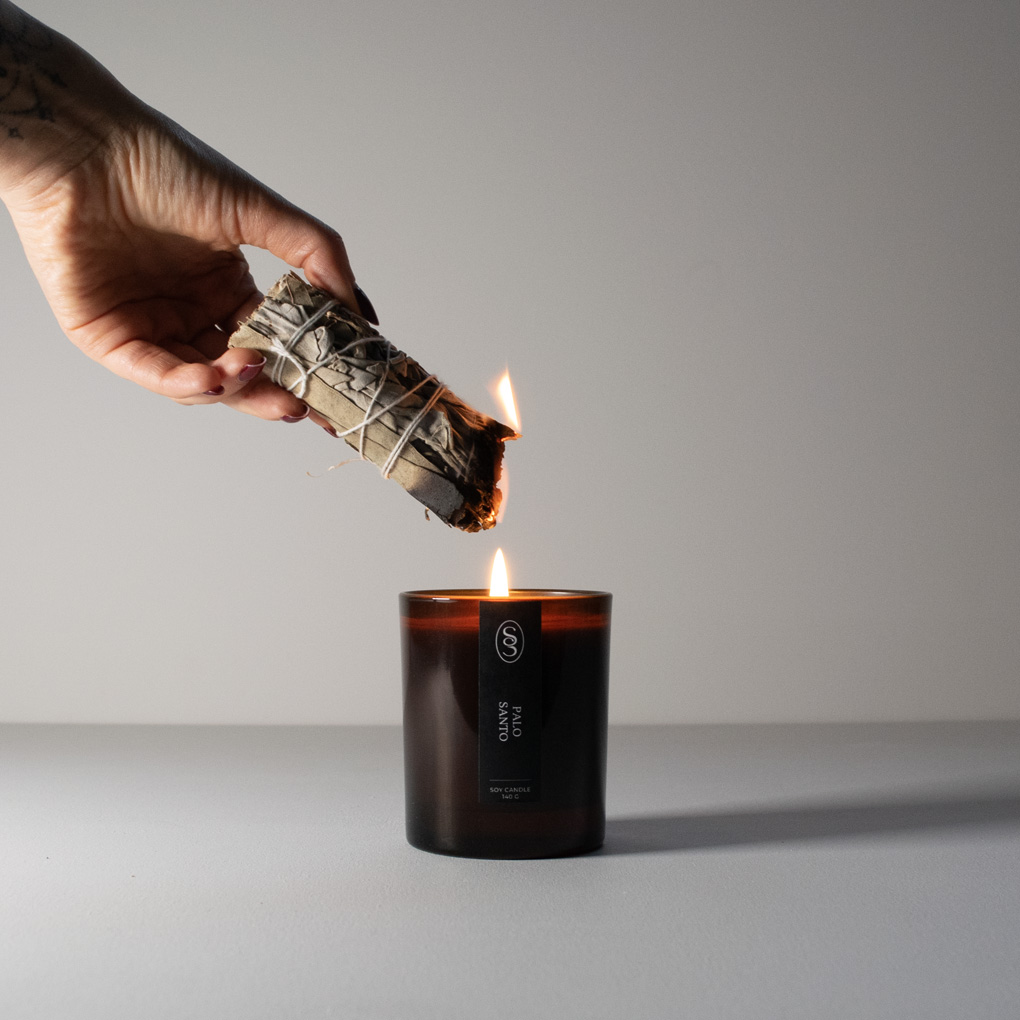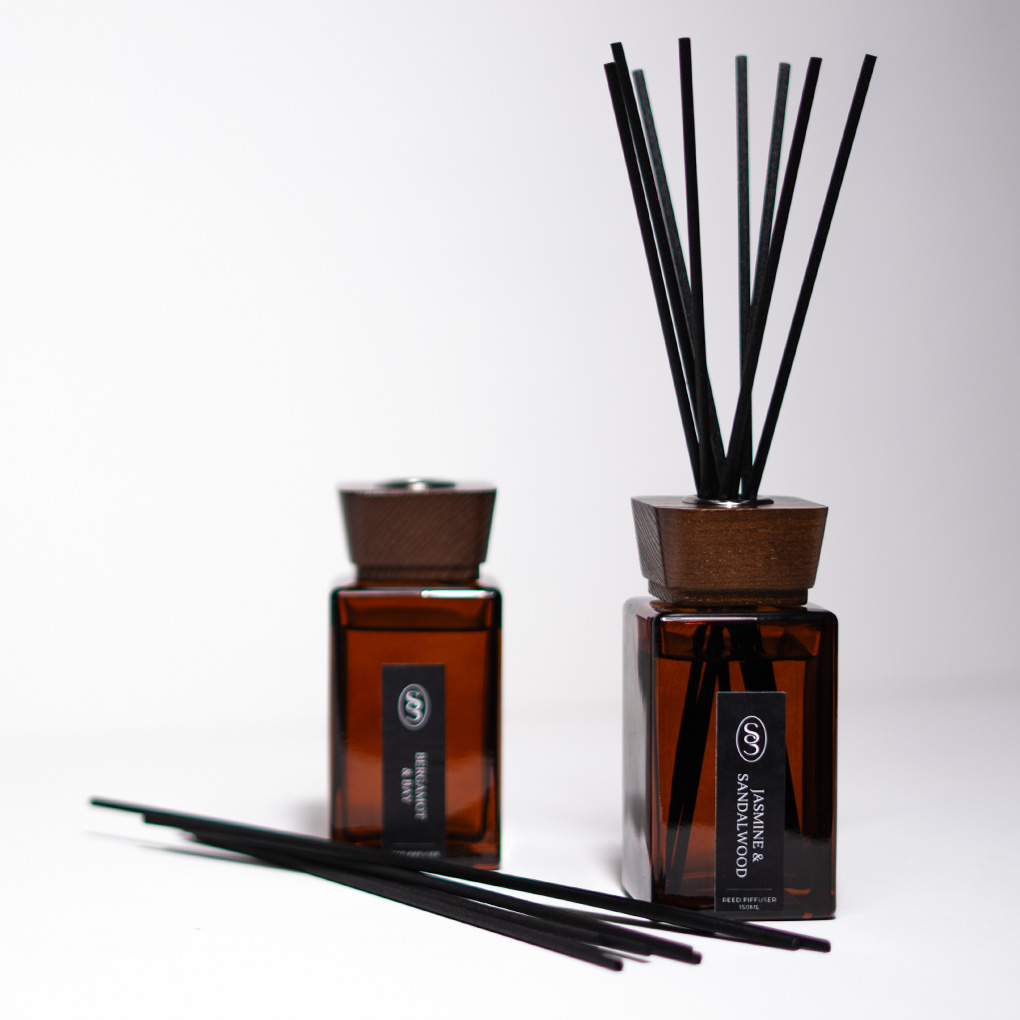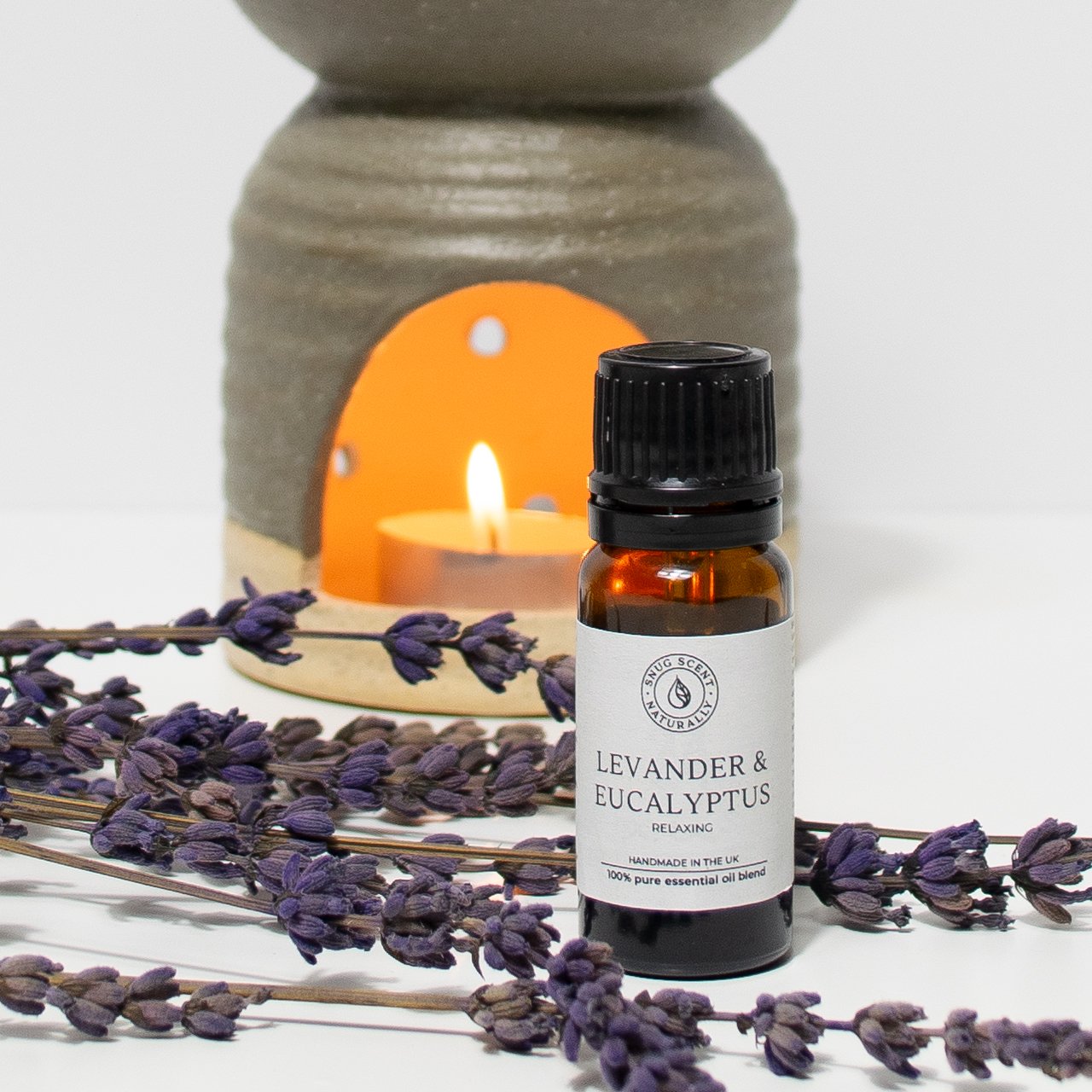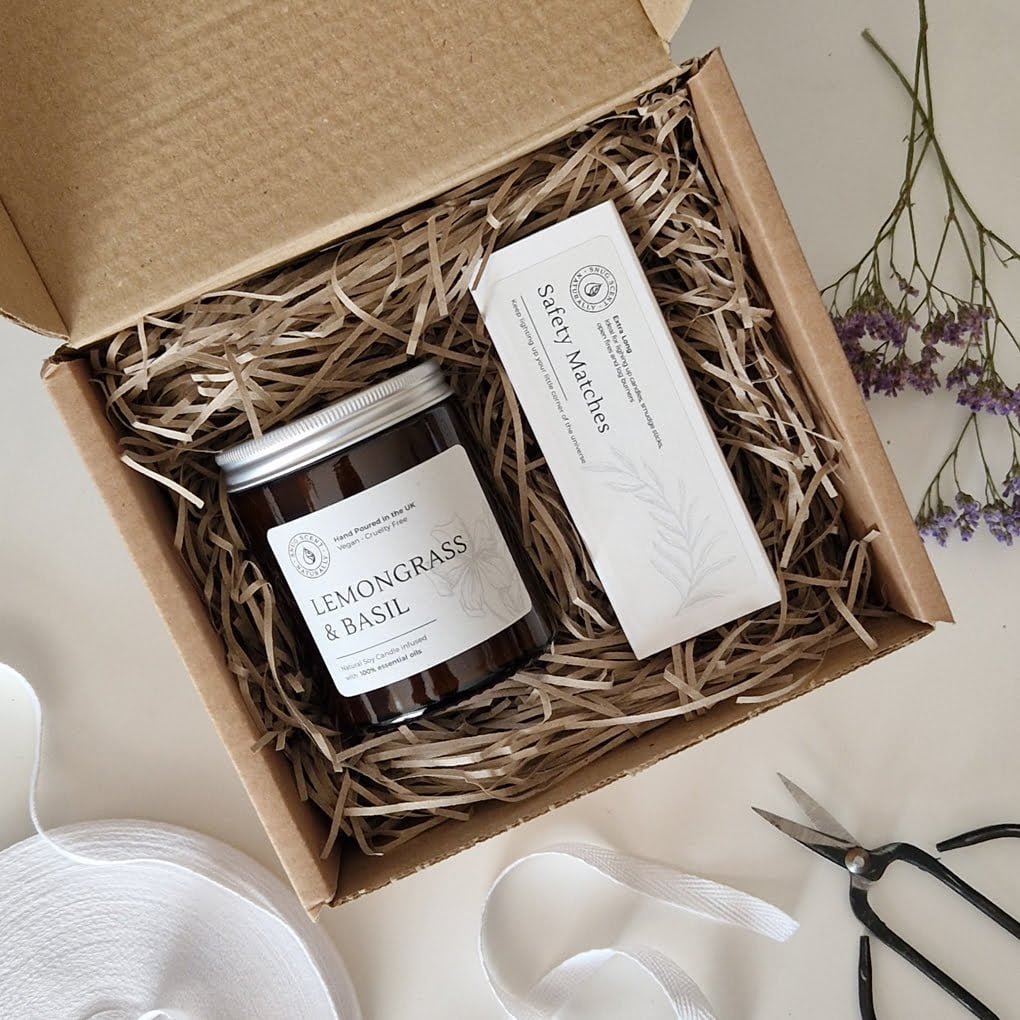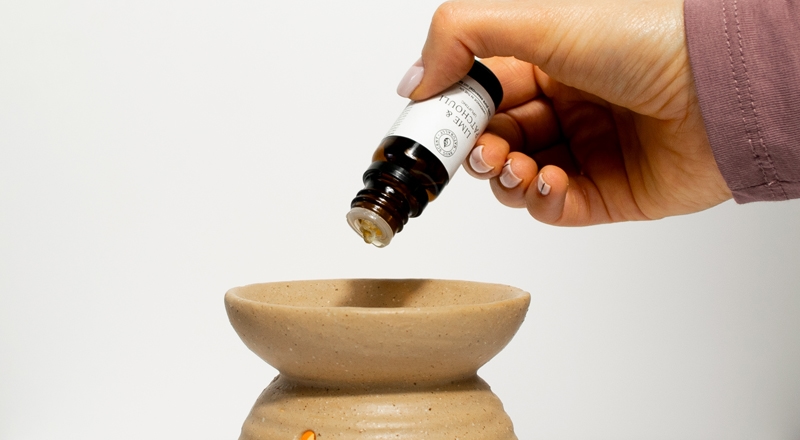About Essential Oils
Therapeutic Benefits of Essential Oils: A Complete Guide
Essential oils are concentrated plant extracts capturing the unique fragrance and beneficial compounds of plants. They are commonly associated with aromatherapy, a practice that uses scents to improve well-being. Essential oils have been used for centuries across cultures, from ancient Egypt to India, where they held significance in rituals and healing practices. Today, natural essential oils are gaining scientific recognition, with studies highlighting their potential therapeutic benefits, which is why they’re often incorporated into personal care and health routines.
Quick Facts About Essential Oils
| Aspect | Details |
|---|---|
| Definition | Concentrated plant extracts capturing the natural fragrance and compounds of plants |
| Primary Use | Aromatherapy and alternative health practices |
| Common Applications | Stress relief, mood enhancement, sleep improvement, skin care, and pain relief |
| Extraction Methods | Steam distillation, cold pressing, CO₂ extraction, solvent extraction |
Chemical Composition and Extraction
Essential oils are composed of various active compounds, like terpenes and phenols, which contribute to their therapeutic effects. Extraction methods play a crucial role in preserving these compounds, ensuring that each oil retains the pure essence of the plant. There are several primary extraction techniques, each suited to different plant types and therapeutic purposes.
- Steam Distillation: The most common method, using steam to separate oil from plant material. This process captures essential compounds like linalool in lavender, known for its calming properties.
- Cold Pressing: Typically used for citrus oils, this method extracts oils by pressing the plant material, preserving compounds without using heat. It’s often employed for oils like lemon and orange, which contain limonene, known for its refreshing effects.
- CO₂ Extraction: This modern method uses carbon dioxide under high pressure to pull essential oils from plants. CO₂ extraction is highly efficient and captures a broader range of compounds, resulting in a richer, more complex oil. This technique is often used for oils that benefit from preserving sensitive compounds, like those in chamomile or frankincense.
- Absolutes: For plants with delicate flowers, such as jasmine or rose, the solvent extraction method produces what is known as an absolute. Absolutes contain a high concentration of aromatic compounds and are often used in perfumery due to their strong, rich scents. Although they are more complex and potent than distilled oils, absolutes may contain trace amounts of solvents.
Please note that choosing a reputable supplier for absolutes is crucial, as the extraction process impacts purity. High-quality suppliers use natural or organic ethanol, avoiding synthetic solvents like hexane or toluene, which can leave harmful trace amounts of residues. This ensures a purer, safer product that preserves the plant’s natural aroma.
The concentrated nature of essential oils, CO₂ extracts, and absolutes means that even a small amount can be powerful, offering benefits specific to each oil’s chemical composition. These are just some of the examples of the main substances found in these plants:
- Limonene: Often found in citrus oils like lemon and orange, it’s known for uplifting and refreshing qualities that boost mood and energy.
- Eucalyptol: Common in eucalyptus and rosemary oils, this compound is excellent for respiratory health and is also valued for its anti-inflammatory effects.
- Citral: Found in lemongrass, citral has a fresh, lemony scent and provides antimicrobial benefits, often used in skincare.
- Citronellol: A component of rose and geranium oils, citronellol is prized for its calming scent and insect-repellent properties.
- Geranium: Known for balancing and stabilising emotions, it’s commonly used in skincare for its soothing effects.
- Linalool: In lavender, it calms the mind and promotes relaxation.
- Menthol: Found in peppermint, it’s cooling, refreshing, and often used to relieve headaches and muscle tension.
Each compound has a specific role, making essential oils and extracts diverse in their therapeutic properties.

Mechanisms of Action
Essential oils and other natural extracts interact with our bodies in two primary ways: through the olfactory pathway and by influencing physiological processes. Both mechanisms are powerful and create a range of effects on emotional and physical health.
Olfactory Pathway
When essential oils are inhaled, scent molecules bind to olfactory receptors in the nose. This triggers signals that reach the limbic system, the brain area controlling emotions, memories, and behaviours. The limbic system’s direct link to neurotransmitters like GABA, serotonin, and dopamine means scent can quickly impact our mental state. For example:
- GABA: Associated with calming effects, helping to reduce anxiety.
- Serotonin: Enhances mood, improving feelings of happiness and reducing stress.
- Dopamine: Known as the “reward” neurotransmitter, can help with motivation and focus.
This process explains why certain oils, like lavender, can induce relaxation, while others, like peppermint, boost alertness.
Physiological Effects
Beyond scent, essential oils can also directly influence the body’s autonomic nervous system and hormone levels. By activating or calming various systems, essential oils can contribute to physical well-being. Studies indicate that some oils help lower cortisol levels, the hormone linked to stress. Others stimulate endorphin release, which is associated with improved mood and natural pain relief. Key effects include:
- Stress Reduction: Oils like chamomile and lavender can calm the nervous system.
- Hormone Balance: Certain oils may support hormonal balance, beneficial for mood regulation.
- Pain Relief: Oils such as eucalyptus and peppermint are recognised for reducing pain and muscle tension.
Together, these mechanisms create a wide array of therapeutic effects, from stress relief to physical relaxation.
Therapeutic Applications
Essential oils are used for a wide range of therapeutic applications, with benefits that can be grouped into psychological and physical categories. Each oil offers unique properties, supporting both mental and physical well-being in various ways.
Psychological Effects
Stress and Anxiety Reduction
Essential oils like lavender and chamomile are known for their calming effects, helping to reduce anxiety and create a sense of peace. Lavender oil is often used in diffusers or as part of a relaxing bedtime routine, while chamomile’s gentle scent is known to ease nervousness. These oils can help lower stress hormones, such as cortisol, making them popular in high-stress settings, such as workplaces and clinics.
Mood Enhancement
Citrus oils, such as bergamot and lemon, are natural mood boosters. These oils have an uplifting aroma that can stimulate the senses and brighten one’s mood. Bergamot is often used to alleviate feelings of sadness or lethargy, while lemon oil is refreshing and can help energise the mind. Incorporating these oils into daily routines, like morning showers or diffusers, can improve outlook and energy levels.
Depression Management
Oils such as rose and ylang-ylang are believed to support emotional well-being and help alleviate mild depressive symptoms. Rose oil, with its gentle floral scent, can promote self-love and reduce feelings of grief. Ylang-ylang, known for its warm, exotic aroma, helps soothe feelings of tension and sadness, making it a comforting option for emotional support.
Sleep Improvement
Essential oils like lavender and vetiver are often recommended for those struggling with sleep. Lavender’s well-known calming properties can help quiet a busy mind, while vetiver has an earthy, grounding scent that promotes a sense of stability and calm. Used before bedtime, these oils can create a restful environment, aiding in longer and more restorative sleep.
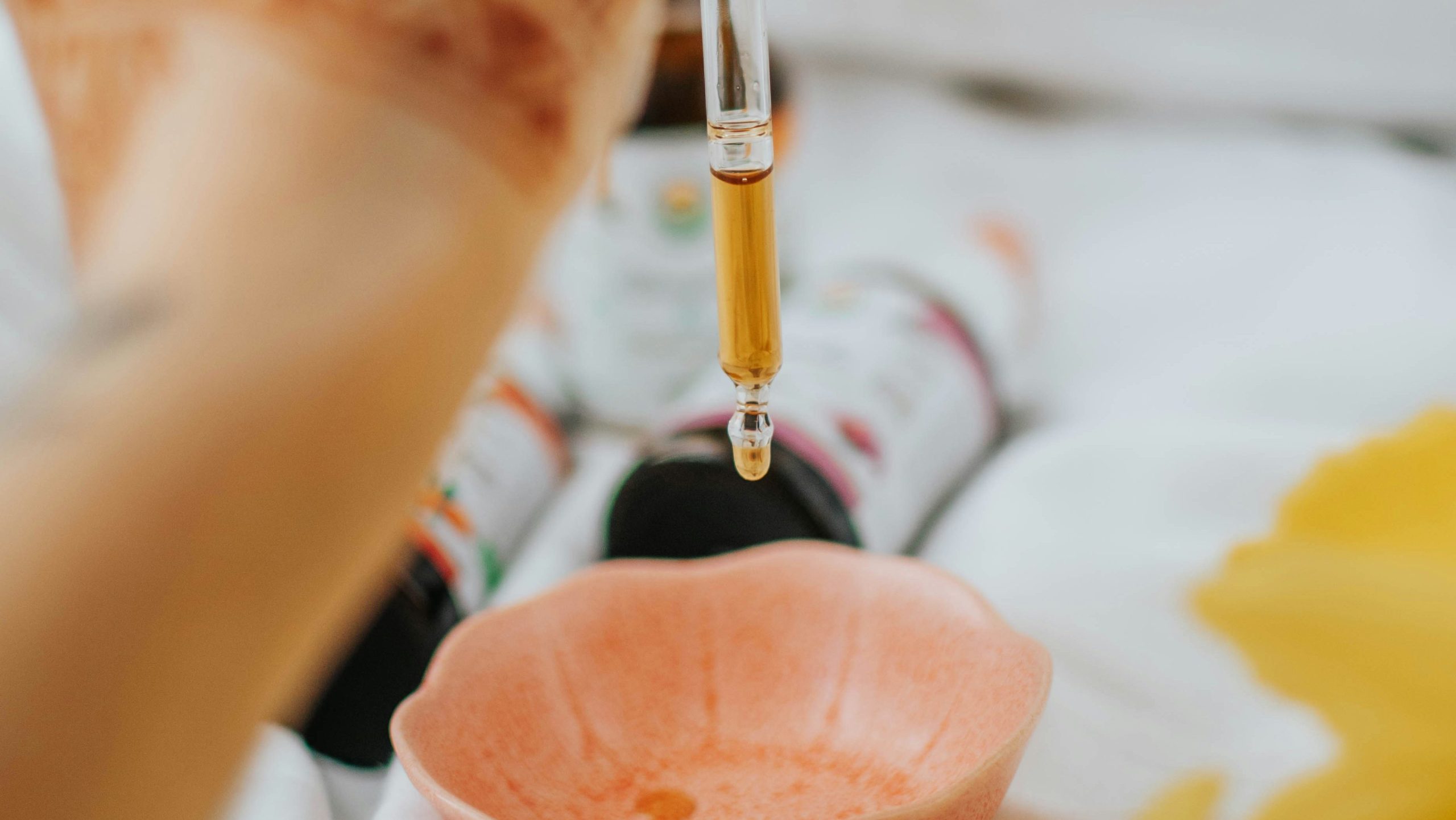
Physical Benefits
Pain Management
Essential oils such as peppermint and eucalyptus are often used to manage pain and discomfort. Peppermint oil, known for its cooling menthol, can soothe headaches and muscle tension, making it popular in massage therapy. Eucalyptus oil, with its anti-inflammatory properties, is widely used to relieve sore muscles and joint pain.
Anti-Inflammatory Properties
Many essential oils, like frankincense and ginger, contain natural anti-inflammatory compounds that help reduce inflammation in the body. Frankincense, in particular, is known to soothe irritated skin and joints, making it a go-to for those with inflammatory conditions like arthritis. Ginger oil can also aid in reducing swelling and is often used in pain-relieving balms.
Antimicrobial Effects
Essential oils like tea tree and oregano are recognised for their ability to fight certain bacteria, viruses, and fungi. Tea tree oil, often found in skincare products, is known for its effectiveness against acne and skin infections. Oregano oil, on the other hand, is a powerful disinfectant and is sometimes used in natural cleaning products for its antimicrobial properties.
Cognitive Performance Enhancement
Rosemary oil is widely studied for its ability to improve memory, concentration, and cognitive performance. Its refreshing, herbaceous aroma can stimulate alertness and is often used by students and professionals alike. Studies have shown that inhaling rosemary oil may improve mental clarity, making it a valuable tool for boosting focus and productivity.
Methods of Application
Inhalation
Inhalation is one of the most popular methods of using essential oils for aromatherapy.
- Direct Inhalation: Simply inhaling the scent directly from the bottle or a few drops on a cloth.
- Diffusion: Using a diffuser disperses essential oils into the air, allowing for continuous inhalation of the aroma.
- Nasal Delivery Systems: Essential oil inhalers, small portable containers, allow users to carry their favourite oils with them.
Topical Application
When applied topically, essential oils penetrate the skin and may offer localised benefits. However, they must be diluted with carrier oils such as jojoba, coconut, or almond oil to prevent skin irritation. This reduces the risk of irritation and allows the oils to be absorbed more gently, especially for sensitive skin areas.
- Massage: Blending essential oils with a carrier oil for massage may help soothe muscle tension and promote relaxation.
- Skin Absorption: Applying diluted essential oils to pulse points can allow for steady absorption and effects.
Each method offers different therapeutic benefits, so the choice often depends on personal preference and the desired effect.
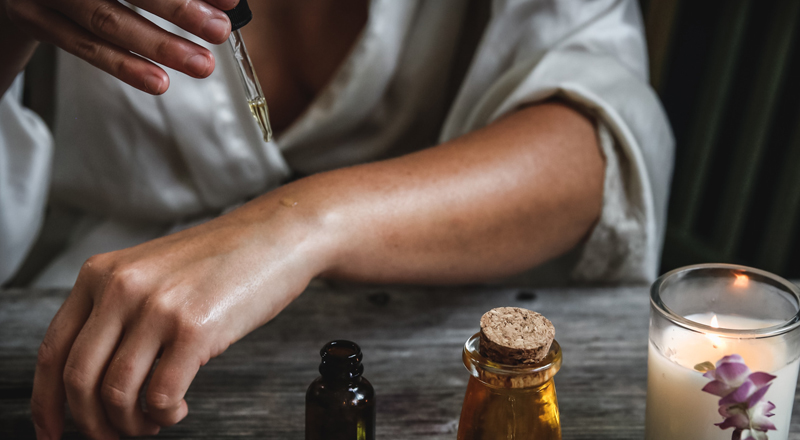
Common Essential Oils and Their Properties
Each essential oil has unique properties suited to different needs. Below are some of the most popular oils and their primary benefits:
| Essential Oil | Primary Benefits |
|---|---|
| Lavender | Known for relaxation and sleep enhancement. |
| Peppermint | Stimulating, great for headaches and focus. |
| Eucalyptus | Clears airways, supports respiratory health. |
| Tea Tree | Known for its antimicrobial and skin-clearing properties. |
| Bergamot | Lifts mood and can reduce anxiety. |
| Rosemary | Enhances memory and focus. |
Safety and Precautions
Using essential oils safely is crucial, especially since they are highly concentrated and potent.
- Dilution: Essential oils should be diluted to prevent skin irritation. Always use a carrier oil.
- Patch Test: Testing a small amount on the skin before full application can help avoid allergic reactions. Common reactions include redness, itching, or a rash. A patch test on a small area of skin can help determine if an oil is safe for individual use.
- Avoid Ingestion: Essential oils should not be ingested unless under the guidance of a healthcare professional.
- Keep Away from Children and Pets: Some essential oils can be harmful to children or pets, so exercise caution. Always consult with a professional and use child-safe oils in low concentrations when children or pets are present. Avoid applying oils directly to children’s skin and keep oils out of reach.
- Other Side Effects: While generally safe when used correctly, essential oils can cause side effects like headaches, dizziness, or nausea if overused. Starting with low doses and ensuring proper ventilation can help minimize these risks, especially for first-time users.
Scientific Evidence and Research
While essential oils have long been used for their therapeutic benefits, science is steadily validating many of these claims. Research, ranging from human trials to animal studies and systematic reviews, is shedding light on the true potential of essential oils.
- Clinical Studies: Lavender oil, for instance, has been consistently shown to promote relaxation and reduce anxiety in human studies. Similarly, tea tree oil is widely recognised for its ability to combat bacteria and fungi, making it a valuable ingredient in skincare and natural cleaning products.
- Future Research Directions: Scientists are also exploring the role of essential oils in mental health, including anxiety and depression management. Emerging studies are examining essential oils’ potential to relieve symptoms of chronic conditions, suggesting a promising future for natural therapies in mainstream healthcare.
Conclusion
Essential oils, with their rich history and multifaceted benefits, continue to captivate users around the world. From soothing stress to enhancing focus and supporting well-being, their applications are wide-ranging. As research progresses, new therapeutic uses are expected to emerge, making essential oils a promising option for those seeking natural ways to support their health and wellness.
